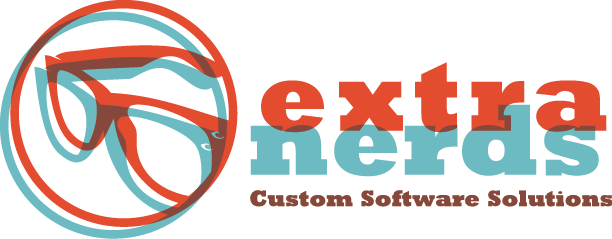““It is not the strongest of the species that survive, nor the most intelligent, but the one most responsive to change.””
Unlocking the Superpower of Custom Software for IT Directors, CIOs, CEOs, and Tech Decision Makers
Ladies and gentlemen, tech enthusiasts and digital daredevils, welcome to the electrifying world of Extra Nerds! We've got our capes on, our coding skills polished, and our wit honed, ready to take you on a thrilling journey into the world of custom software and how it's turning businesses into unstoppable forces of nature.
In a world where change is the only constant, agility isn't just a buzzword—it's a superpower. And, it's precisely what IT Directors, CIOs, CEOs, and other tech decision-makers need to keep their businesses ahead of the curve. So, let's talk about how custom software solutions can be your secret weapon for achieving the flexibility and adaptability your business deserves.
The Need for Speed
In today's tech-driven business landscape, speed is the name of the game. Your competitors are all jockeying for the pole position, and you can't afford to be stuck in the slow lane. That's where custom software comes to the rescue. Unlike off-the-shelf solutions that offer a one-size-fits-some approach, custom software is tailor-made for your business. It's like having a race car that's been designed just for your track.
With custom software, you can quickly adapt to changing market conditions, customer demands, and emerging technologies. Need to pivot your business model? No problem. Custom software is your pit crew, ready to make the necessary adjustments and get you back on track in record time.
Agility: Not Just for Gymnasts
Being agile in the business world doesn't mean doing somersaults or cartwheels (although that would be entertaining). It's all about being responsive and adaptable. Custom software gives you the power to react to market shifts, customer feedback, and emerging trends without breaking a sweat. It's the superhero cape you wear to ensure your business stays ahead of the game.
Consider a scenario where your company suddenly needs to support remote work due to unforeseen circumstances (we're looking at you, 2020). With custom software, you can swiftly develop and implement the tools and systems required to keep your team productive and connected, all while sipping coffee in your pajamas.
Innovate or Evaporate
The modern business landscape is a wild ride, and if you're not innovating, you're evaporating. Custom software allows you to foster a culture of innovation within your organization. You're no longer tied to the limitations of out-of-the-box software. You have the freedom to experiment, create, and develop new features and capabilities that set you apart from the competition.
This freedom to innovate can be a game-changer in industries where differentiation is key. You're not just keeping up with the trends; you're setting them. It's like being the trendsetter of the tech world—Batman's utility belt, but in the form of code.
Tailored to Perfection
Custom software is like a finely-tailored suit—made to measure. It fits your business's unique needs like a glove. Whether you're in healthcare, finance, logistics, or any other industry, custom software ensures you're equipped with the tools and capabilities necessary to excel.
Off-the-shelf software often requires you to adapt your processes to fit its limitations. Custom software does the opposite—it molds itself to your processes. It's like having an AI-powered butler that anticipates your every need and fulfills your business wishes with a snap of your fingers.
Conclusion: Embrace Your Inner Extra Nerd
In a world that demands agility, innovation, and customization, custom software is your trusted sidekick. It's the tech-savvy, witty, and incredibly talented partner you need in the ever-evolving business landscape. IT Directors, CIOs, CEOs, and tech decision-makers, it's time to embrace your inner Extra Nerd and harness the full potential of custom software solutions.
With custom software, your business can go beyond survival and thrive, adapting, innovating, and leading the way. So, suit up, power up your business with custom software, and get ready to conquer the digital world! Your competitors won't know what hit them when you unveil your secret weapon: Agility in Action.



